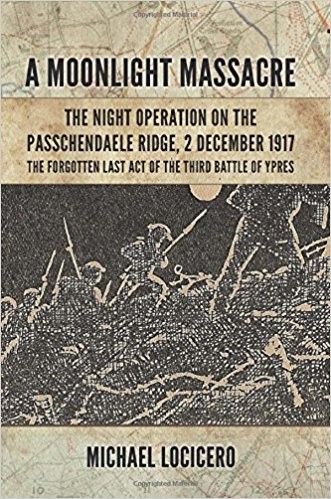Chairman’s Introduction
Thanks Terry!
May I firstly take this opportunity to compliment and say a big “Thank You” to the retiring Chairman, Terry Jackson, who has reigned for ten years, enabling us to have regular monthly meetings and listen to an endless cornucopia of WW1 subjects during the Centenary period and long before of course. Well done Terry and you, and Ann, can now sail off into the sunset, if you can find the time between your stints of invigilating and speeding around Lyme Park in a mini-bus?
Looking forward my grateful thanks to Andy McVeety who has agreed to carry on as our Hon. Treasurer and, due to closure of RBS, is already embroiled in moving the Branch fortune to an alternative safe haven.
Phil Hamer has agreed, nay nominated himself, to carry on in the role of “General” dogsbody. He will continue to ensure that all necessary wiring is safely positioned and that ‘we’ will be educated about the Great War and I’m sure he’ll keep the speakers on their toes with suitably testing questions.
Also, we have Joan Tomlinson who has always greeted members as they enter the room with the obligatory raffle tickets and will continue to organise the draw and prizes. We seem to have accumulated a large number of books and DVD’s so she will look at ways and means to and move these on asap.
Our steward, Alan, will continue to prepare the coffee/tea/biscuits in the bar after the evening’s talk.
I look forward to my first official meeting as new Chairman of the Branch and I encourage and welcome all who might read this to attend and be enlightened by our guest Greg Baugham speaking on the aviation aspect of Great War history.
My intention is to carry on as before with no more change than seems to be necessary. Additions and diversions in the honourable continuance of ever learning more about the Great War years, the before and the after being equally important in trying to understand the reasons why it all started and the social and political changes that fell on our forebears during that tumultuous era.
We will continue to remember all those who gave their lives during the conflict as well as those who survived and returned to spend the rest of their lives feeling guilty perhaps as the lucky ones who had ‘survived’ what their mates had suffered in either death or serious injury.
Ralph
The New Chairman - Ralph Lomas b.1948
My interest in war started as a young lad in the fifties with the emergence of comic book adventures, b/w war films, an introduction to Biggles' books by my big brother, and thereon all things military and daring do but plenty of sport as well.
In the late 1970’s a family friend told me of his father, who had served in WW1 with the 1st Essex Bn, and died in Flanders in January 1918. He recommended reading Lynn Macdonald's book 'Passchendaele'. I remember how the veteran's stories had gripped my imagination and there was an interest born to find out more about this Great War.
That same friend arranged a trip to Belgium in 1984 to visit Tyne Cot where his father was one of 12,000 remembered on the wall. This trip and cemetery visit made a lasting impression.
In 2004 I was introduced to the WFA Lancashire & Cheshire Branch by then Branch Chairman, John Richardson. One of my first speaker experiences happened to be Peter Simkins and this encouraged me to join the Association.
With the retirement of Stan Grosvenor in 2005 I was approached by the WFA for advice on publishing the "ST!" Reprints which have since sold out except for Vol. 3. The Executive Committee then asked me to provide a proposal to take over the Bulletin to 'modernise, manage and develop' the overall process of supplying members with regular high-quality publications. I was appointed and additionally agreed to act as editor after nobody else applied for the job.
My first edition (75) was in June 2006. I’m currently preparing the '111th' edition, my 37th, for publication in August.
In 1988, after 24 years at various Advertising/Marketing companies, I set up my own contract Publishing company, APP Publishing Consultants Ltd., to develop and supply self-funding publications and print management services in the Association/Institution and Local Authority sector. 1st July this year is my 30th year.
Looking Back: The position on the Western front in April/May 1918
Ludendorff’s desperate follow up offensives, to the stalled Operation Michael, of 21 March to 4 April, would continue during the summer months. On 11th April Haig issued his famous “Backs to the wall…” directive. There followed a period of further intense German offensive activity right through to the end of July.
Following Michael came Georgette or the Battle of the Lys which opened on 9 April and turned the German attention to the rail route through Hazebrouck and the approaches to the channel ports of Calais, Boulogne and Dunkirk. German success here could choke the British into defeat but this stalled as well. Closely followed by Blücher Yorck, on 27th May, 3rd Battle of the Aisne, aimed at forcing the French armies in the South to draw forces from the North. More was to follow as the German leadership hammered away, ultimately failing.
11th May Speaker is Greg Baugham
“The Myth of Fighter Development in WW1”
We welcome for the first time to Stockport Greg Baughem. Greg has been researching the history of British and French air forces for over forty years, with a focus on how air power evolved in both countries. Retirement provides the time to turn research into books, with the first three in a series published.
His talk "From Flying Dreadnought to Dogfighter - The Troubled Birth of the British Fighter" destroys many myths about WW1 fighter development. Part talk, part detective story, it explains how the importance of air superiority was understood long before the First World War began, explores how the influence of naval thinking delayed the development of dogfighters like the Camel and SE5a and tracks down the mysterious Fighting Experimental dreadnoughts that the RFC wanted to use instead. Based on the article of the same name in the spring 2016 edition of Air Britain's Aeromilitaria, in turn based on one of the themes in his book Blueprint for Victory.
Books published: Blueprint for Victory, The Rise of the Bomber, The RAF in the Battle of France and the Battle of Britain, The Fairey Battle -a Reappraisal of its RAF Career Articles in RAF Air Power Review, Air Britain's Aeromilitaria and The Aviation Historian.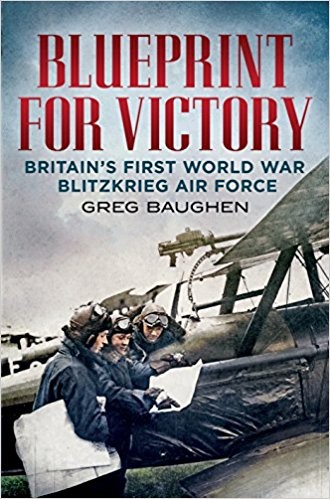
100 Years Ago
HMS Vindictive served with the Mediterranean Squadron from 1900, Captain Herbert Augustus Warren in command. She visited Larnaka in June 1902. 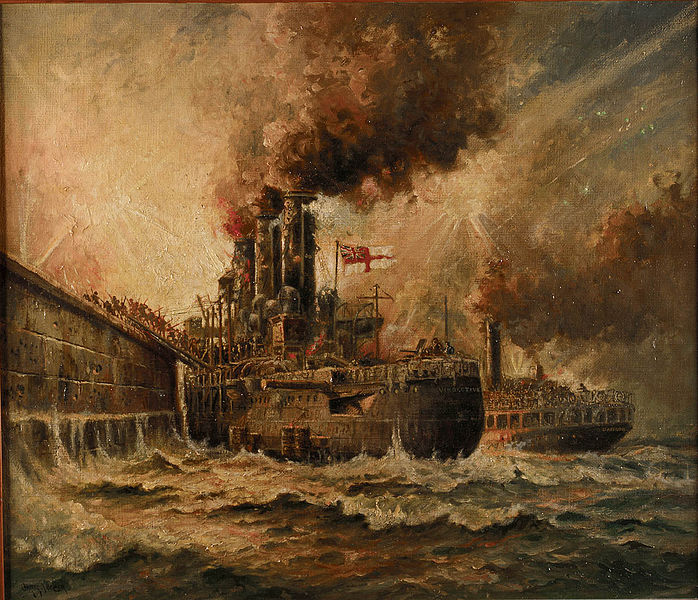
She was refitted in 1909–10 for service in the 3rd Division of the Home Fleet. In March 1912 she became a tender to the training establishment HMS Vernon. Obsolescent by the outbreak of First World War in August 1914, she was assigned to the 9th Cruiser Squadron and captured the German merchantmen Schlesien and Slawentzitz on 7 August and 8 September respectively.
In 1915 she was stationed on the southeast coast of South America. From 1916 to late 1917 she served in the White Sea.
Early in 1918 she was fitted out for the Zeebrugge Raid. Most of her guns were replaced by howitzers, flame-throwers and mortars. On 23 April 1918 she was in fierce action at Zeebrugge when she went alongside the mole, and her upper works were badly damaged by gunfire, her Captain, Alfred Carpenter was awarded a Victoria Cross for his actions during the raid. This event was famously painted by Charles de Lacy, the painting hangs in the Britannia Royal Naval College.
In addition to her usual complement, she embarked Royal Marine gunners to man the supplementary armament, and a larger raiding party. This comprised two of the three infantry companies of the 4th Battalion, Royal Marine Light Infantry, (their third company was embarked on the Iris), along with two "companies" of seamen raiders commanded by Lieutenant Commander Bryan Fullerton Adams and Lieutenant Arthur Chamberlain ("A" & "B" seamen Companies) respectively. 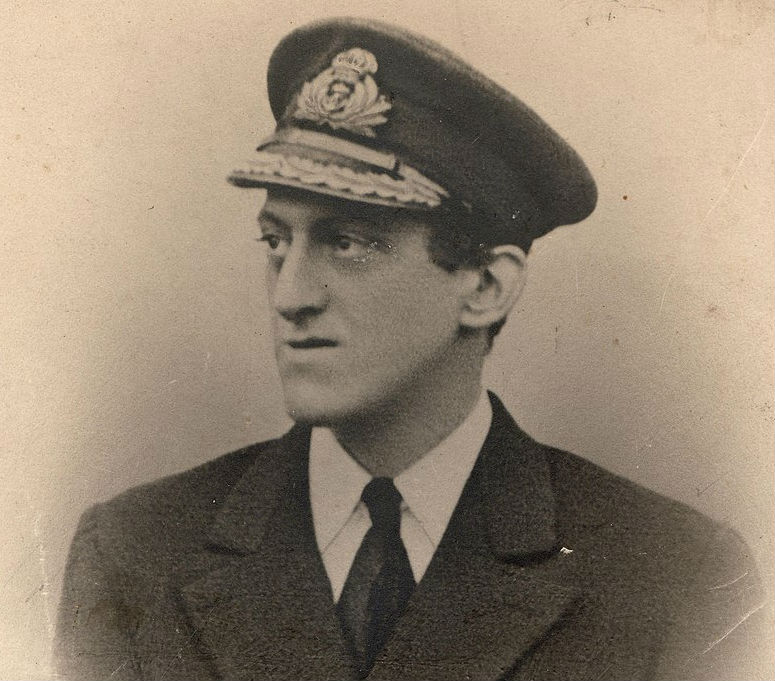
She was sunk as a blockship at Ostende during the Second Ostende Raid on 10 May 1918. HM Motor Launch 254 picked up 38 survivors of Vindictive's 55 crewmen. The ships Commander Alfred Godsal (photo right) perished on board. The wreck was raised on 16 August 1920 and subsequently broken up. The bow section has been preserved in Ostend harbour serving as a memorial. One of Vindictive's 7.5-inch howitzers was acquired and preserved by the Imperial War Museum.
The Zeebrugge and Ostende Raids, with their associated crop of VCs, had given the ship late celebrity and her name was perpetuated by renaming the
aircraft carrier HMS Cavendish, which was under construction, as Vindictive.
Terry
Last Month’s Talk
Jim Beach told the story of Vince Schürhoff. He was from a German family living in England at the outbreak of war. His father was a migrant who had moved to Birmingham. Vince had some education in Germany before coming to England
Vince was a twenty-six year-old corporal in the British army's Royal Engineers (Signal Service). In 1914 he had joined the army as an infantryman in the 3rd Birmingham City Battalion (Royal Warwickshire Regiment) and three years later, because he spoke fluent German, was seconded to signals intelligence work. In 1916 he had worked as an interpreter on the Somme and by 1918 was at Arras in his intelligence role which included interrogating German prisoners. Such men were rare and the army did not want to lose them as casualties. He could also speak French and Spanish.
At five in the morning on 21 March 1918, Vince Schürhoff woke to the thunderous sound of a bombardment. After many false alarms, the much-anticipated German offensive had begun
That day Vince was in command of what their inhabitants called an IToc (aye-tok) station and the army called a listening set post. Using metal probes and long loops of wire, Vince and his comrades could pick up German messages leaking from trench telephone lines or Morse buzzer messages sent through the earth (Likewise the Germans could tap our calls).
Vince had worked in several IToc stations and also as a prisoner interrogator, but in March 1918 he was in a deep dug-out near the devastated French village of Croisilles, south-east of Arras. This location happened to be at the northern end of the offensive that was meant to end the war in Germany's favour.
With Vince were two other linguists; Wilkie Roberts, a mariner who had worked on the German waterways, and Ernest Tucker, a Cambridge-educated librarian who, unsurprisingly, had a reputation for being a bit of a bookworm. His team also included two young signallers; William Corker from Durham, nicknamed Jelly Belly, and Cyril Haines from Hull.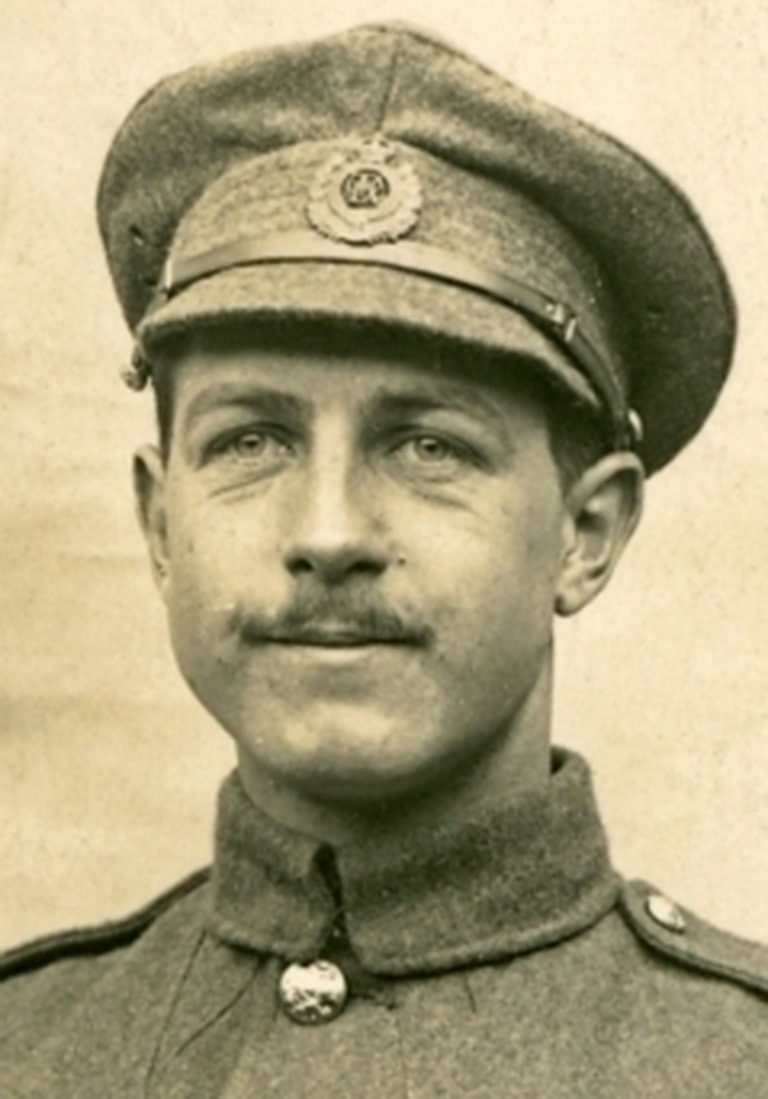
The British were expecting the attack, so Vince's orders were to intercept German messages and pass them on to the local commander. If the Germans broke through, at the last safe moment they were to destroy their equipment and retreat.
After the initial bombardment, the German attack took a few hours to develop because their main thrust was further south. During this period Vince's team intercepted several German messages. Sprinting across open ground through the ongoing shelling, Vince delivered them to the nearest infantry battalion's headquarters. By two in the afternoon the situation seemed to have stabilised and Vince saw what he thought were British reinforcements approaching from the south. But when they got closer he realised they were German soldiers threatening to cut off their position. Vince decided it was time to go. He wrapped the listening amplifier in a blanket and ordered his men out from the safety of the dug-out.
All morning Vince's men had been anxious to withdraw, but when the time came the intensity of the bombardment caused one man to falter. Vince physically dragged him from the dug-out and, alternately running and crawling, they made their way to the rear. The infantry pulled out shortly afterwards.
Having reached the relative safety of the area behind Croisilles, Vince was alarmed when a very low-flying German aircraft strafed the road. In later years Vince's sleep would be haunted by the memory of the pilot looking down on him through his goggles.
Eventually the team trudged into the signallers' base camp a few miles back. Having lost contact with the station, Vince's captain had feared the worst. Much relieved to see them, he sat Vince down outside his tent, gave him a large beer and let him tell his story.
In subsequent weeks Vince returned to prisoner interrogation work. In May, with the German threat having subsided, he was summoned to corps headquarters where he was awarded the Military Medal for his actions on 21 March.
In his home city of Birmingham Vince's family were understandably very proud and ensured that the news featured in the local press. But they had a secondary motive beyond familial pride; they needed to demonstrate their loyalty to Britain.
Before the war Vince had been known by his real first-name, Fritz. His father was born in Germany but had become a British citizen after emigrating in the 1870s. During the First World War those of German birth came under suspicion. In early 1918, as the British army suffered reverses in France, the jingoistic press scapegoated these naturalised Germans, using the slogan "once a German, always a German".
So although their son had been decorated for fighting the Kaiser's army, the Schürhoff family - like the Royal Family a year earlier - decided to Anglicise their surname. They chose Shirley, apparently after the name of the Birmingham suburb.
But more suspicion was to come. In October 1918, with the British now in pursuit of the retreating German army, Vince and other interpreters with Germanic surnames were relieved of their intelligence duties and confined to the signals depot on the coast.
In January 1919 Vince returned to civilian life, although in the Second World War he put a uniform back on to serve in the Home Guard. We are fortunate that Vince also squirreled away the diaries that he had kept throughout the war. Fifty years later he transcribed them and wrote up some additional recollections. Copies are now deposited in the Imperial War Museum and the Military Intelligence Museum.
An interesting slant on what went on behind and under the lines Ed
Terry
NEXT Meeting 8th June: Speaker is Dr Michael LoCicero
‘A Moonlight Massacre’ - The Night Operation on the Passchendaele Ridge, 2 December 1917: The Forgotten Last Act of the Third Battle of Ypres.
The Third Battle of Ypres was officially terminated by Field Marshal Sir Douglas Haig with the opening of the Battle of Cambrai on 20 November 1917. Nevertheless, a comparatively unknown set-piece attack – the only large-scale night operation carried out on the Flanders front during the campaign – was launched twelve days later on 2 December. This volume is a necessary corrective to previously published campaign narratives of what has become popularly known as ‘Passchendaele’. It examines the course of events from the mid-November decision to sanction further offensive activity in the vicinity of Passchendaele village to the barren operational outcome that forced British GHQ to halt the attack within ten hours of Zero. A litany of unfortunate decisions and circumstances contributed to the profitless result. At the tactical level, a novel hybrid set-piece attack scheme was undermined by a fatal combination of snow-covered terrain and bright moonlight. At the operational level, the highly unsatisfactory local situation in the immediate aftermath of Third Ypres’ post-strategic phase (26 October-10 November) appeared to offer no other alternative to attacking from the confines of an extremely vulnerable salient. Perhaps the most tragic aspect of the affair occurred at the political and strategic level, where Haig’s earnest advocacy for resumption of the Flanders offensive in spring 1918 was maintained despite obvious signs that the initiative had now passed to the enemy and the crisis of the war was fast approaching.
Ralph Lomas
